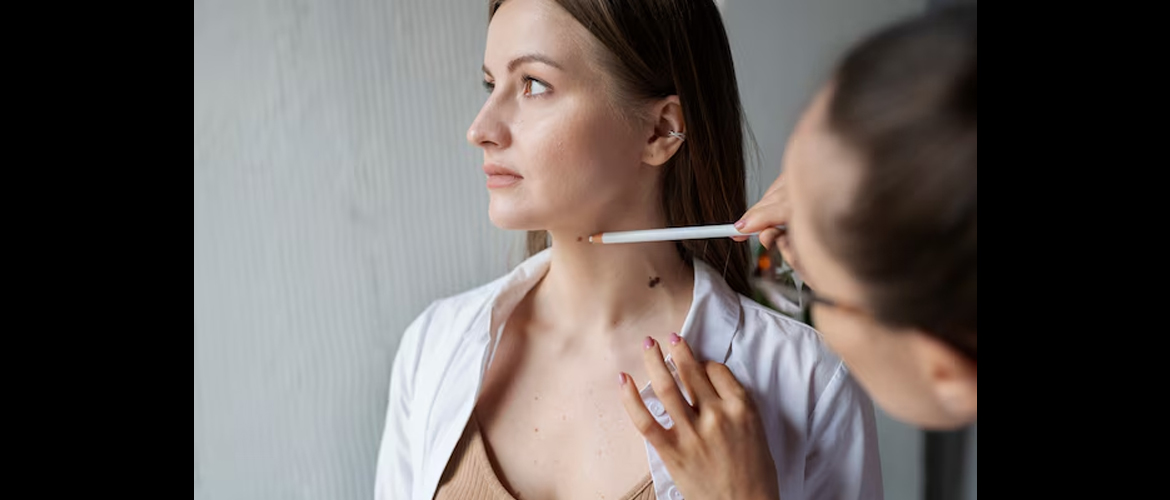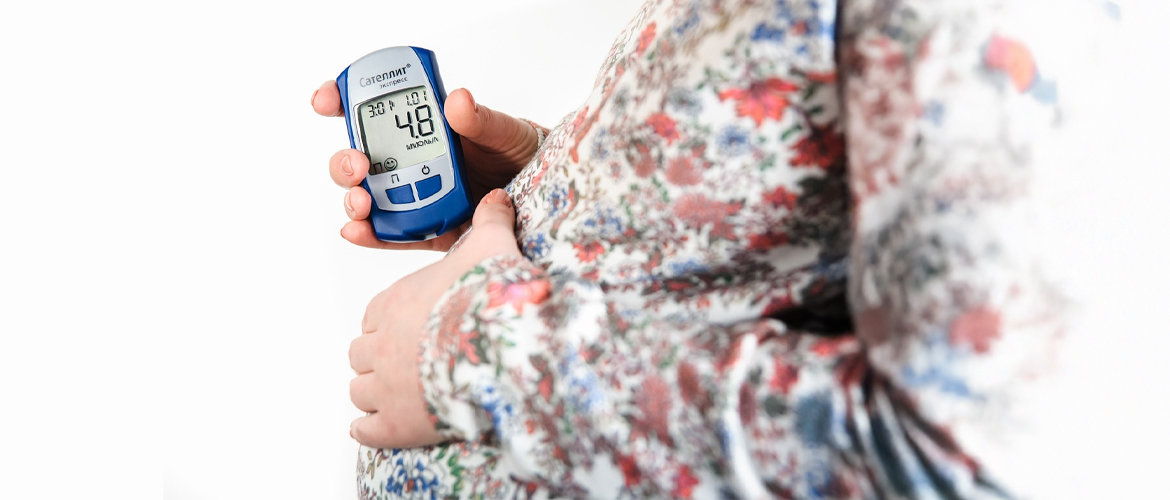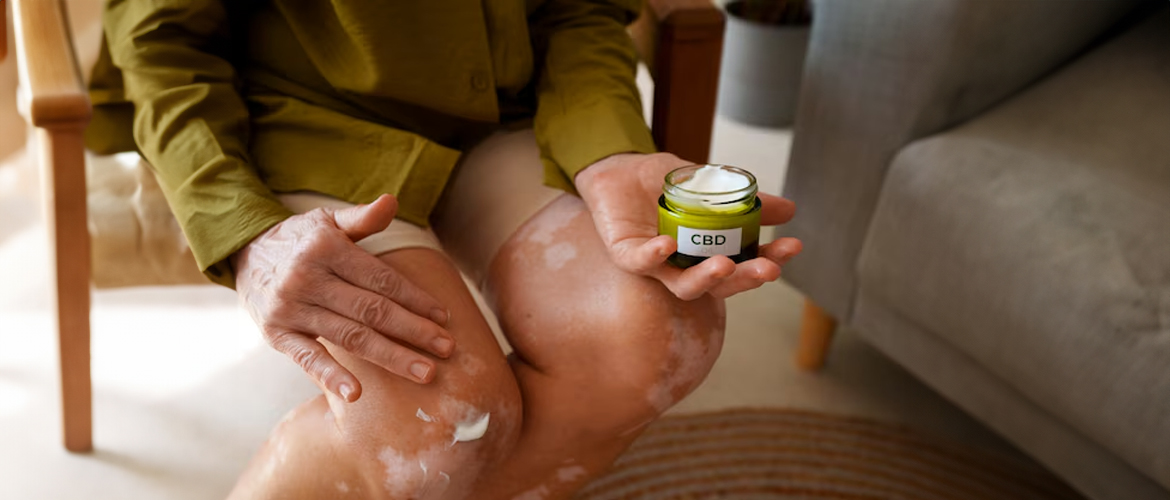Skin cancer is the most common cancer in the United States, with millions of cases diagnosed each year. Recent statistics show that one in five Americans will develop skin cancer by the age of 70. Each hour, more than two people die of skin cancer in the U.S. In 2023 alone, an estimated 5.4 million basal and squamous cell skin cancers were treated in the U.S. Moreover, melanoma, the deadliest form of skin cancer, is projected to cause over 7,000 deaths this year. Despite these alarming figures, skin cancer is highly preventable with the right knowledge and habits. This blog aims to raise awareness about skin cancer and provide detailed strategies on how to prevent skin cancer effectively.
Table of Contents
- What is Skin Cancer?
- Types of Skin Cancer
- How to Spot Skin Cancer
- Diagnosis Process of Skin Cancer
- How to Prevent Skin Cancer
- Treatment Options for Skin Cancer
What is Skin Cancer?
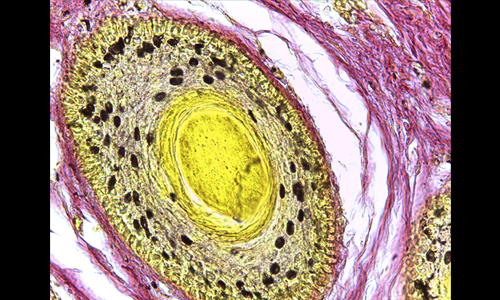
Skin cancer happens when skin cells start to grow out of control, and this is usually because of DNA damage from ultraviolet (UV) radiation. This damage can cause mutations that make the cells multiply rapidly. It's a common misconception that only people with fair skin are at risk. In reality, skin cancer can affect anyone, regardless of skin tone.
Understanding the stages of skin cancer is crucial. These stages range from 0, also known as in situ, where the cancer is just in the outer layer of the skin, to stage IV, where the cancer has spread to other parts of the body. The higher the stage, the more intensive the treatment required. Being aware of these stages helps in recognising the importance of early detection and treatment.
Types of Skin Cancer
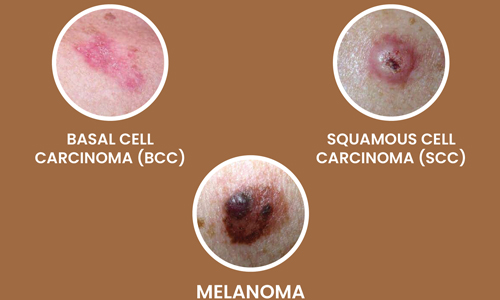
There are several types of skin cancer. Here is a quick view of each type with unique characteristics:
- Basal Cell Carcinoma (BCC): The most common type, usually appearing as a small, shiny bump on sun-exposed areas.
- Squamous Cell Carcinoma (SCC): Often looks like a red, scaly patch or sore that doesn't heal.
- Melanoma: The deadliest form, characterised by dark, irregular moles or spots.
Other Rare Types: Includes Merkel cell carcinoma and dermatological protuberant (DFSP).
How to Spot Skin Cancer

Detecting skin cancer early can make a significant difference in treatment outcomes. But how to spot it? Look for the following signs and symptoms and easily identify the skin cancer at its early stages.:
Early Signs and Symptoms
- Pay attention to any new spots or lumps on your skin, especially those that appear pearly, translucent, tan, brown, black, or multicoloured.
- If you have a sore or wound that doesn’t heal within a few weeks, it could be a sign of skin cancer. Especially those that bleed, ooze, or become crusty, should be checked by a dermatologist.
- Monitor your moles for any changes in size, shape, colour, or texture. Moles that become itchy, tender, or painful, or those that start to bleed, should be evaluated by a doctor.
ABCDEs of Melanoma
The ABCDE rule is a helpful guide for identifying the warning signs of melanoma, the most serious type of skin cancer. Examine your moles and spots for the following characteristics:
- Asymmetry (A): Non-cancerous moles are usually symmetrical, while melanoma lesions tend to have an irregular shape.
- Border Irregularity (B): Normal moles have smooth, even borders, whereas the borders of melanomas are often uneven.
- Color Variation (C): The colour is not uniform and may include shades of brown, black, tan, red, white, or blue.
- Diameter Over 6 mm (D): The mole or spot is larger than 6 millimetres across (about the size of a pencil eraser). It's important to note that melanomas can be smaller when first detected, so any significant change in size should be taken seriously.
- Evolving Shape or Color (E): The mole or spot is changing in size, shape, colour, or elevation, or new symptoms such as bleeding, itching, or crusting develop.
Diagnosis Process of Skin Cancer
Once you spot signs of skin cancer, don't wait—visit your dermatologist promptly. They will perform a thorough diagnosis, which typically involves a detailed skin examination and, if necessary, a biopsy to analyse a sample of the suspicious area.
1. Skin Examination
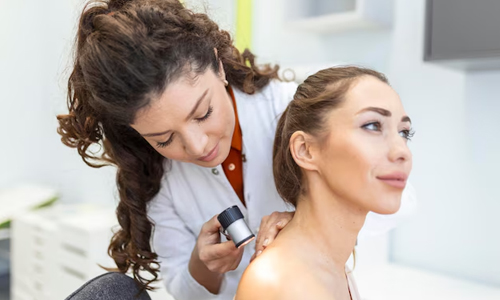
During a skin examination, a dermatologist will conduct a thorough visual inspection of your skin. They will look for any unusual growths, moles, or changes in your skin's appearance using a dermatology.
2. Biopsy Procedures
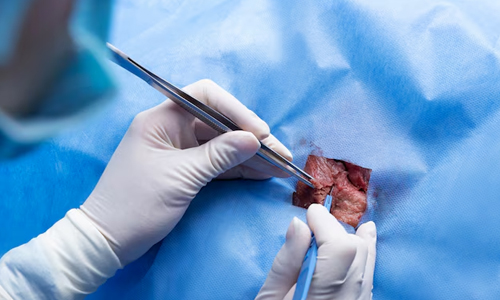
If the dermatologist identifies a suspicious area, they will likely recommend a biopsy to confirm whether it is cancerous or not. The types of biopsy procedures include:
- Shave Biopsy: The top layers of the skin are shaved off for examination.
- Punch Biopsy: A circular tool is used to remove a small, deep sample of skin.
- Excision Biopsy: The entire lesion or growth is removed, often with some surrounding tissue.
- Incision Biopsy: Only a portion of the suspicious area is removed for analysis.
The tissue sample is then sent to a laboratory where a pathologist examines it under a microscope to determine if cancer cells are present.
3. Dermatologist's Role
The dermatologist assesses the biopsy results, determines the type and stage of skin cancer if present, and discusses the most appropriate treatment options with you.
Ingredients and Chemicals That May Increase the Risk of Skin Cancer
Certain ingredients and chemicals in everyday products can increase the risk of skin cancer. Experts suggest avoiding prolonged exposure to:
| Ingredient/Chemical | Source | Risk Factor |
| Arsenic | Contaminated water, certain pesticides, industrial processes | Can increase risk when exposed over long periods |
| Polycyclic Aromatic Hydrocarbons (PAHs) | Tobacco smoke, charred foods, industrial environments | Linked to skin cancer, particularly through chronic exposure |
| Coal Tar | Some medical treatments, industrial products | Contains carcinogenic compounds |
| Psoralens | Certain medications, plants (especially with UV exposure) | Increases skin sensitivity to UV radiation, raising risk |
| UV Radiation | Sun, tanning beds | Primary cause of DNA damage leading to skin cancer |
Being aware of these substances and reducing exposure can significantly contribute to skin cancer prevention.
How to Prevent Skin Cancer
Finally, we've reached the heart of our blog. Here are a few ways to protect yourself from skin cancer. Let's dive into each prevention method in detail!
1. Seek the Shade

The sun emits two types of harmful rays, UVA and UVB. UVA rays penetrate deeply into the skin, leading to premature aging and DNA damage while UVB rays are responsible for sunburns and also damage the DNA in skin cells. Over time, repeated exposure to these rays can cause uncontrolled growth and the development of cancer. Spending time in the shade, especially between 10 a.m. and 4 p.m. when the sun's rays are strongest, helps protect your skin from harmful UV radiation. Whether you're at the beach, park, or just outside for errands, finding shade under umbrellas, trees, or other shelters reduces your overall exposure.
2. Wear Protective Clothing

Choosing the right clothing can significantly shield your skin from UV rays. Opt for tightly woven fabrics that cover as much skin as possible. Long-sleeved shirts, pants, wide-brimmed hats, and sunglasses with UV protection are essential. These not only protect but also keep you comfortable and stylish outdoors.
3. Use Broad-Spectrum Sunscreen
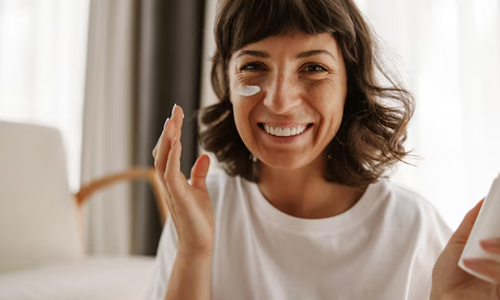
Sunscreen is your frontline defense against skin cancer. Look for broad-spectrum sunscreen with an SPF of 30 or higher. Apply it generously to all exposed skin, even on cloudy days or in winter. Remember to reapply every two hours or immediately after swimming or sweating to maintain effective protection.
4. Avoid Tanning Beds
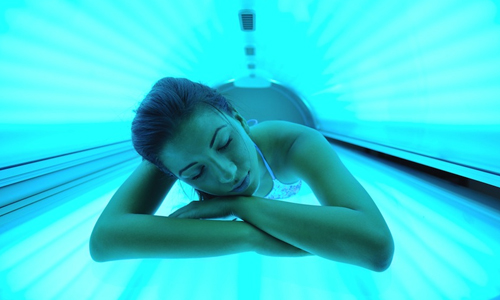
Tanning beds and sunlamps emit UV rays, often in much higher concentrations than natural sunlight. Using tanning beds before the age of 35 increases the risk of melanoma by 59%. The more frequent the use, the higher the risk. So, Instead of preferring artificial tanning methods, opt for sunless tanning products or bronzes that provide a safer alternative for achieving a tan without risking your skin's health.
5. Be Extra Cautious Near Water, Snow, and Sand

Reflective surfaces like water, snow, and sand can intensify the sun's UV rays, leading to increased exposure. Whether you're swimming, skiing, or enjoying a day at the beach, take extra precautions.
6. Get Vitamin D Safely

Vitamin D is essential for bone health and overall well-being. While sunlight is a natural source of vitamin D, it's important to obtain it safely without risking skin damage. Balance your sun exposure by getting vitamin D through a healthy diet, supplements, or brief periods of outdoor activity.
7. Check Your Skin Regularly

Performing regular self-examination of your skin helps you detect any changes early. Look for new moles, growths, or changes in existing ones. Use mirrors or ask a family member to check hard-to-see areas like your back or scalp. If you notice anything unusual, consult a dermatologist promptly.
8. Eat a Balanced Diet to Support Skin Health

Your lifestyle choices play a significant role in your overall skin health. Eating a balanced diet rich in antioxidants can help support your skin and boost your immune system. Foods like berries, nuts, and leafy greens are excellent options. Staying hydrated is also vital for maintaining healthy skin, so drink plenty of water throughout the day. Moreover, avoiding smoking and limiting alcohol consumption can further protect your skin from damage and reduce your risk of skin cancer.
9. Spread Awareness

Finally, educating yourself and others about the importance of skin cancer prevention can make a big difference. Spread awareness by sharing information on safe sun practices with your friends and family. By becoming an advocate for skin cancer prevention, you can help create a community that prioritizes skin health and reduces the incidence of this preventable disease.
10. Stay Informed and Updated

Skin cancer research and prevention strategies are continually evolving. Stay informed by keeping up with the latest news and recommendations from reputable health organisations. Regularly check sources like the American Cancer Society or the Skin Cancer Foundation for updates. Knowledge is power, and staying educated helps you make informed decisions about your health and safety.
Treatment Options for Skin Cancer
When it comes to treating skin cancer, there are various methods available, each tailored to the specific type, stage, and location of the cancer, as well as the overall health of the patient. The table below provides a comprehensive overview of the most common skin cancer treatments to help you understand your options and what to expect from each approach.

Top Places Around the World to Treat Skin Cancer
If you're seeking top-notch care and advanced treatment for cancer recovery, consider these renowned centers in mind:
MD Anderson Cancer Center (USA): Known for its top-notch skin cancer program, it combines cutting-edge research with excellent patient care to treat skin cancer effectively.
Memorial Sloan Kettering Cancer Center (USA): Famous for its innovative melanoma treatments, Memorial Sloan Kettering offers specialized care and clinical trials to provide the best outcomes for skin cancer patients.
Royal Marsden Hospital (UK): A pioneer in cancer treatment, Royal Marsden is renowned for personalized cancer therapy, bringing hope and healing to many.
Melanoma Institute Australia (Australia): Leading the way in melanoma research and treatment, this institute uses a multidisciplinary approach to provide comprehensive care, integrating surgery, medical oncology, radiation, and research.
All these centers report exceptionally high cure rates, due to their advanced medical technologies and comprehensive care approaches. These centers are not just places for treatment; they are havens of hope where countless inspiring stories of triumph over disease unfold every day. Take the time to visit one of these renowned centers, where dedicated healthcare professionals work tirelessly to ensure quick and complete recovery. Whether you or a loved one is battling skin cancer, these centers offer a beacon of hope and a pathway to a healthier, cancer-free life.
Inspirational Stories
Hearing about others' battles with skin cancer can be incredibly inspiring and motivating. Here are a few stories from people we’ve known.
| Jane's Journey: Jane was diagnosed with melanoma at 32. Through early detection and treatment at MD Anderson, she beat the cancer and now advocates for sun safety.
Mike's Mission: After his squamous cell carcinoma diagnosis, Mike underwent successful treatment and founded a non-profit to raise skin cancer awareness. Lisa's Lesson: Lisa, a mother of two, discovered a suspicious mole during a self-exam. Early intervention saved her life, and she now educates others on the importance of skin checks. Jill’s Story: She is a melanoma survivor who tackled her diagnosis with a combination of medical treatment and a positive mindset, advocating for regular skin checks and sun safety. Her advice to others: "Stay vigilant, listen to your body, and never underestimate the power of support from loved ones." Michael’s Survival: After being diagnosed with basal cell carcinoma, he became a passionate advocate for skin cancer awareness, sharing his journey to educate others on prevention and early detection. |
Live a Cancer-Free Life
By understanding how to prevent skin cancer and taking proactive steps, you can significantly reduce your risk. Stay vigilant, educate others, and protect your skin to enjoy a healthier, cancer-free life.
FAQ :
1) What are the causes of skin cancer?
Skin cancer is primarily caused by UV radiation from the sun or tanning beds. Other factors include genetics, fair skin, exposure to certain chemicals, and a weakened immune system.
2) How curable is skin cancer?
Skin cancer is highly curable, especially when detected early. The cure rate for early-stage basal cell and squamous cell carcinomas is over 95%, while melanoma's prognosis improves with early detection.
3) Can 90% of skin cancers be prevented?
Yes, 90% of skin cancers can be prevented by avoiding excessive sun exposure, using sunscreen, wearing protective clothing, and avoiding tanning beds.
4) How to avoid getting skin cancer?
Avoid sunburns, use broad-spectrum sunscreen, wear hats and sunglasses, seek shade, avoid tanning beds, and perform regular skin self-exams to catch early signs of skin cancer.
5)What does stage 1 skin cancer look like?
Stage 1 skin cancer may appear as a small, pearly, or waxy bump, a flat, flesh-colored, or brown scar-like lesion, or a new mole or growth that changes in color, size, or feel.

